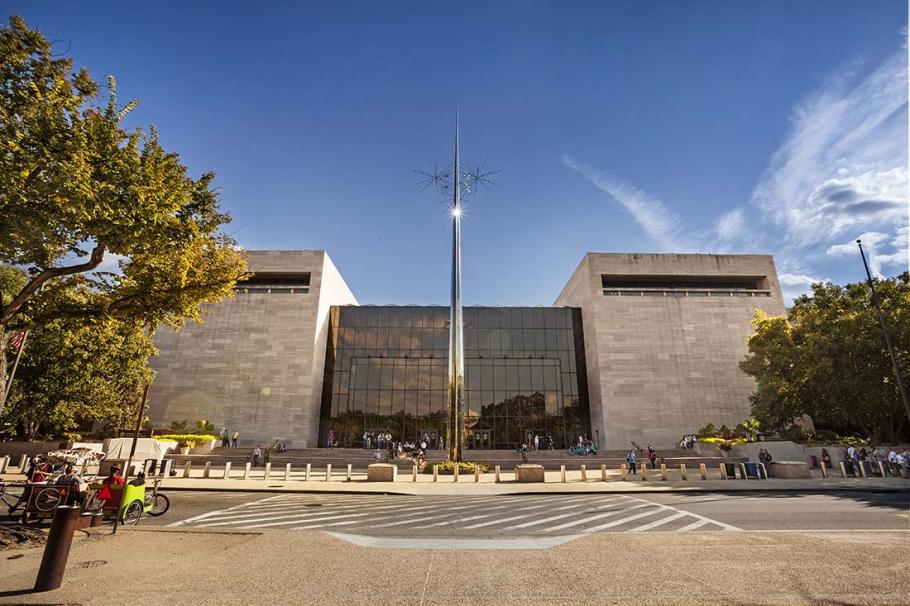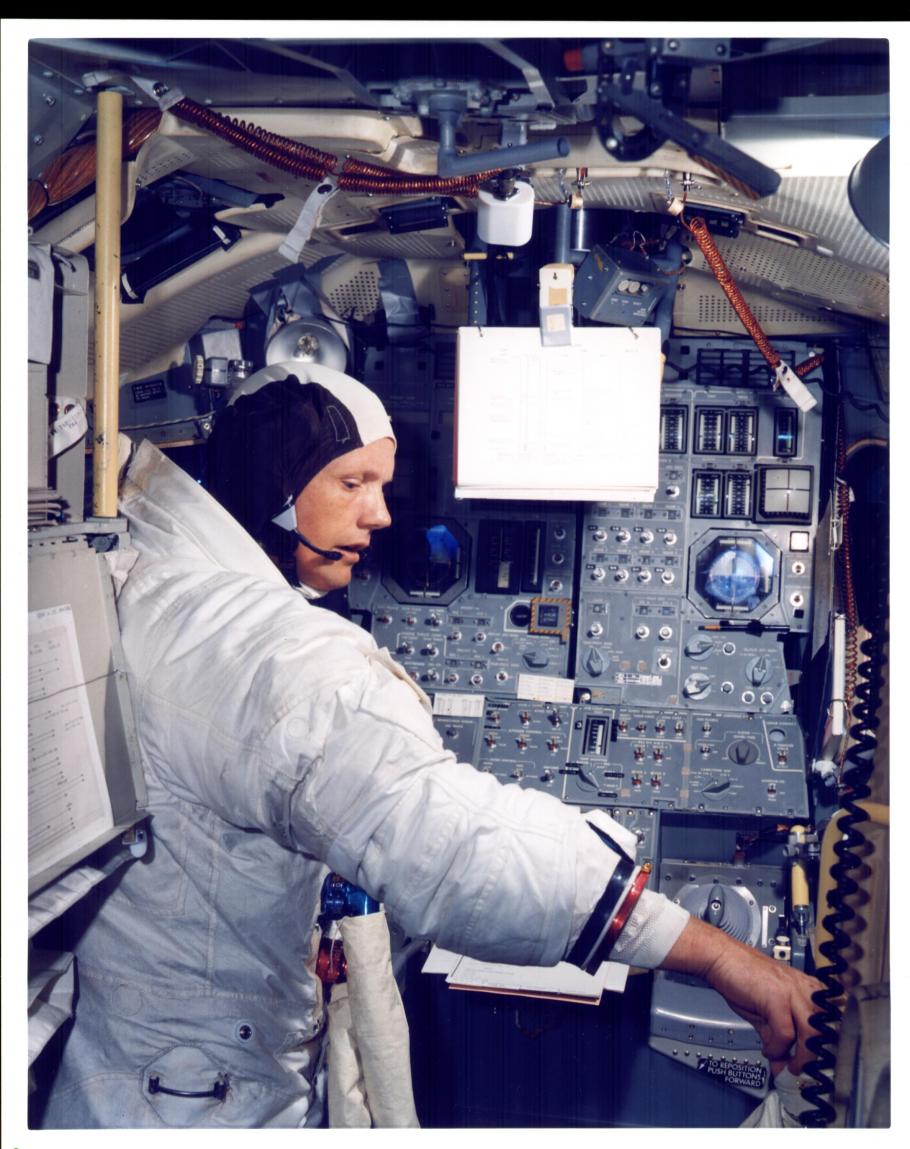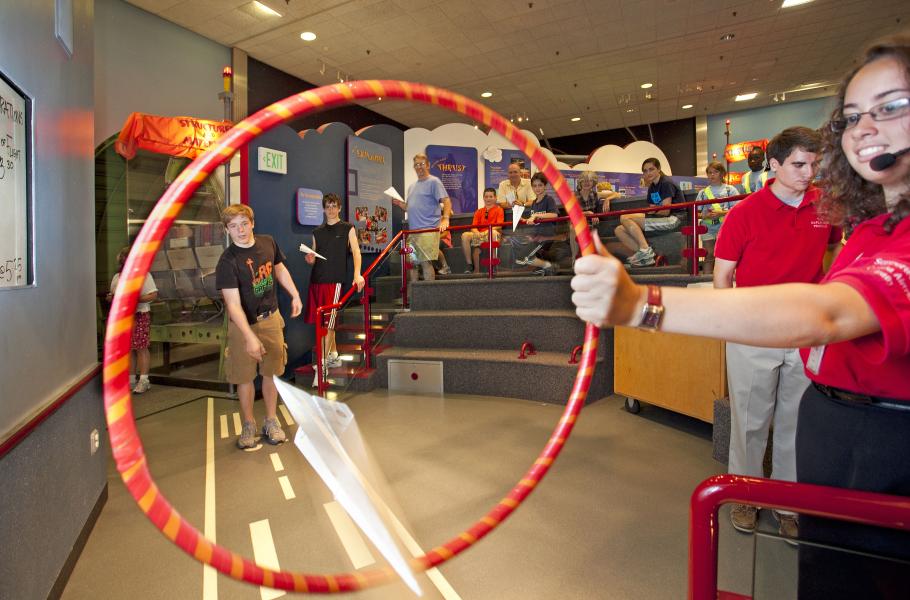Top 8 Stories of 2018
As we prepare to ring in a new year, let’s revisit some of our favorite stories of 2018: stories that let you look closer at our collections, dive into the history of women in space and aviation, and explore our Museum in DC from your own home.
- Here's Why The US Flag Sometimes Appears Backwards
Space Shuttle Discovery on display in the James S. McDonnell Space Hangar at the Udvar-Hazy Center in Chantilly, VA on April 20, 2012. Discovery was installed on April 19, 2012. If you’re an observant visitor, you might have noticed that the American flag on the side of the Space Shuttle Discovery on display at our Steven F. Udvar Hazy Center appears to be backwards.
No, it’s not a very large (literally and figuratively) NASA snafu. The "backwards" flag is actually part of the US Flag Code, which applies to spacecraft, aircraft, and even service members’ uniform insignia.
-
Your Tour Through The National Air and Space Museum
Ground level view of the National Air and Space Museum and the sculpture "Ad Astra" by Richard Lippold as it stands alongside the National Air and Space Museum on Jefferson Drive, September 19, 2013.
As one of the most visited museums in the United States, it’s hard to imagine what it would be like to walk through the National Air and Space Museum and be the only one around. Now, you can have the Museum all to yourself (from the comfort of your own home!) with these stunning panorama images of our National Mall building.
-
Looking Closer at the Saturn V
The Apollo Command and Service Module combination (CSM 105), was originally used for vibration and acoustic tests.
On July 20, 1969, a whole nation tuned in to see astronaut Neil Armstrong take one small step on the surface of the Moon, ushering in a new era of space exploration. But how did Armstrong and the Apollo 11 astronauts get to the Moon in the first place?
-
Today, Mars is warmer than Earth. See how we compare
Mars image constructed from Viking 1 Orbiter imagery, Visual Imaging Subsystem Camera A.
The coordinates of the Lambert azimuthal equal area projection are latitude 90 degrees N. to 90 degrees S. and longitude -180 degrees to 0 degrees. The north polar residual ice cap of the Planum Boreum region, which is cut by spiral-patterned troughs, is located at top. The upper part is marked by large depression, Isidis basin, which contains light-colored plains. The upper part also includes the light-colored smooth plains of Elysium Planitia and dark plains of Vastitas Borealis. Together, these form a vast expanse of contiguous plains. Toward the bottom, on the other hand, the southern hemisphere is almost entirely made up of heavily cratered highlands. Toward the bottom, a conspicuous, relatively bright circular depression marks the ancient large Hellas impact basin.
The northeastern United States experienced record-breaking cold weather at the beginning of 2018. Those were temperatures so frigid that parts of Mars—a cold, desert planet—were actually warmer than certain spots in the U.S. But how does Mars’ climate compare to that of our home planet?
-
What First Man Got Right About Neil Armstrong
Apollo 11 Commander Neil Armstrong goes through flight training in the lunar module simulator at the Kennedy Space Center.
This year, the First Man film hit theaters, bringing the story of Neil Armstrong and Apollo 11 to the big screen. (We film even held a premiere at our Museum on the National Mall!)
After the credits rolled, were you left wondering what First Man got right or wrong about Neil Armstrong? One of our Space History curators weighed in.
-
Navy WAVE working on US Navy Cryptanalytic Bombe. Credit: US Government courtesy of the National Cryptologic Museum
A guest post from the National Cryptologic Museum explored women code breakers' top-secret work during World War II.
-
Tips and Tricks for Your Summer Museum Visit
Boy participates in a paper airplane contest in the National Air and Space Museum's How Things Fly gallery.
Already dreaming of warm weather and summer vacations? (We certainly are!) Our blog readers enjoyed these tips to help them make the most of their trip to Air and Space.
-
Four History-Making Latinos You Should Know
Major Marisol A. Chalas, the first Latina National Guard Black Hawk pilot. Credit: Massachusetts Maritime Academy
Since the earliest days of flight, Hispanic men and women have shaped aviation—breaking records, exploring the farthest reaches of our world, and shaping what’s possible in the aerospace field. Learn more about these history-making groundbreakers.
Related Topics
You may also like
We rely on the generous support of donors, sponsors, members, and other benefactors to share the history and impact of aviation and spaceflight, educate the public, and inspire future generations. With your help, we can continue to preserve and safeguard the world’s most comprehensive collection of artifacts representing the great achievements of flight and space exploration.







